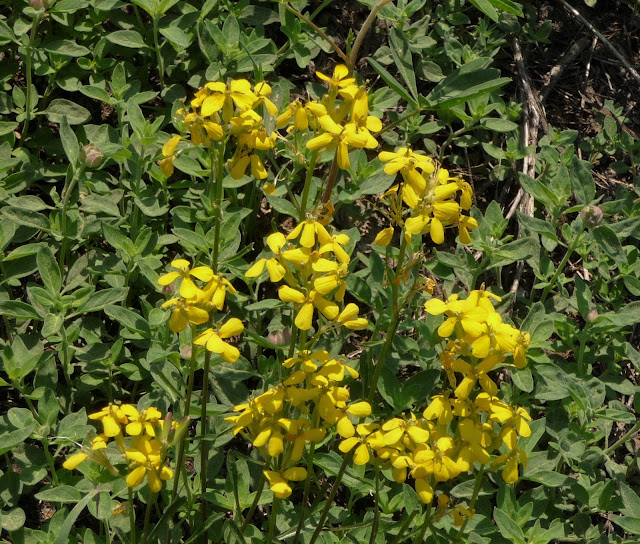Kay had been trying to get another tour from the company we
had before (Pacific Northwest Tours) to go to Mount. St. Helens. They said they’d pick us up but did not
show. I volunteered to drive there and
off we went.
It was an amazing
trip. Brought back huge memories for
me. I remembered seeing the mountain
before it “blew its top” in May 1980.
The summer before I’d driven back from Salem, OR to Kelowna. I’d stayed in Ritzville, one of the towns the
ash the volcano temporarily buried after the explosion.
 |
| Smoky Mount S. Helens in the distance |
Although I felt rather rotten, being up and driving did me
good. The volcano, still active, is
about 75 miles north and a bit east from Portland. The road we took in was near Castle Rock and pretty
soon we met up with the Toutle River (that was completely blocked by ash
following the explosion). The river is grey with ash and has all kinds of
little tributaries trying to ooze their way through the sludge.
 |
| Toutle River still clogged with ash after 30 years |
For pretty much the whole day, no matter what we were
driving through or what I was taking pictures of, there was Mt. St. Helens
looming mistily and somewhat malevolently in the background.
 |
| An eerie sort of beauty |
After stopping for a while at the Silver Lake
Mt. St. Helens Visitor’s site, which gave us some history, geology and real
life experience of the blast, we continued on our way along Highway 504, the
Spirit Lake Highway. This is a somewhat
lonely twisty, windy 40 odd miles of volcanic devastation. While the vegetation is beginning to grow
back, there is no doubt it suffered a huge assault some 30 years ago.
 |
| New growth amidst the devastation |
At the end of the road, tucked into the side of Johnston’s
Ridge and only five miles from the north side of the mountain, the Johnston
Ridge Observatory provides visitors the opportunity to come within a stone’s
throw of the crater and face-to-face with a mountain that blew with such
magnitude and fury. One can walk out on the viewing deck or take a stroll along
one of the trails and feel the energy of the mountain as it continues to puff
with steam.
 |
| Higher views |
 |
| Crater |
In the almost 60 photos I took, while I caught some of the
sense of loneliness, destruction, meters deep of ash, still “puffing” active
vents, long dead trees and stumps ripped off by the force of the blast and even
some of the new life slowly growing up through the rubble, somehow it is not
possible to capture the magnitude of the area.
 |
| Volcano still venting |
 |
| Tree damage from the explosion |
U.S. President Jimmy Carter surveyed the damage and said, "Someone
said this area looked like a moonscape. But the moon looks more like a golf
course compared to what's up there.”
Couldn’t have said it better myself.
It is really all rather eerie.
We took time to go through the many exhibits and read through personal
survival stories from that fateful day on May 18, 1980. The Centre offered the
movie, exhibits, interpretive talks, photographs and viewing areas to maximize
the Mount St. Helens experience. Johnston Ridge Observatory is the closest
viewpoint to the crater of Mount St. Helens. Although it was an experience I
would not have missed, it gave me a feeling of visiting a huge tragedy of life,
history and geology.
 |
| Mount St. Helens |
Kay and I headed back to Portland in the late afternoon and
another super meal at Elmer’s.


















































